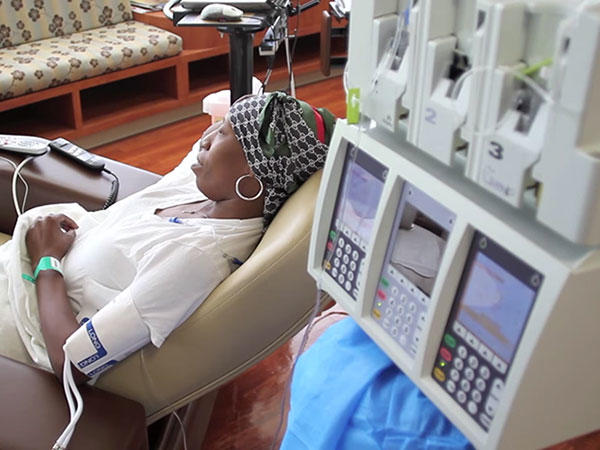Persistent Peripheral Neuropathy Increases Fall Risk among Cancer Survivors
, by NCI Staff
Many women cancer survivors have problems with mobility and other physical functioning as a result of persistent peripheral neuropathy caused by chemotherapy treatment, according to a new study. The problems with physical functioning were associated with a substantial increase in the women’s risk for injurious falls.
The study findings were presented on January 11 at the 2016 Cancer Survivorship Symposium in San Francisco.
Investigating the Problem
A number of chemotherapy drugs can damage the peripheral nerves that help to control movement of the arms and legs and the ability to detect sensation with the hands and feet. The resulting disorder is called chemotherapy-induced peripheral neuropathy (CIPN).
There are few clinical therapeutic options for treating patients with the condition, explained Sarah Temkin, M.D., of the Johns Hopkins School of Medicine.
CIPN can occur at any time during chemotherapy, and recent studies have shown that symptoms can persist for years in many patients.
This new study looked at more than 500 women enrolled in four exercise intervention trials designed to address fractures and falls in women cancer survivors. Most of the women in the study had been treated for breast cancer.
At an average of 6 years after completing chemotherapy, 45 percent of the women reported that they still experienced numbness in their hands and feet, reported the study’s lead author, Kerri M. Winters-Stone, Ph.D., of Oregon Health and Science University. These women had an altered gait pattern and worse physical functioning than the women who were not experiencing long-term CIPN. They were also twice as likely to fall, putting them at major risk for fractures.
In addition to having worse mobility and physical functioning, CIPN disrupted women’s ability to perform everyday tasks like rising from a chair, walking up and down stairs, cooking, and shopping. “What was interesting is that the data showed neuropathy did not cause muscle weakness, but rather created a distinct effect on movement and gait patterns, which are likely more neural in origin,” explained Dr. Winters-Stone.
Addressing CIPN-Specific Issues
“We have not done a good job managing CIPN,” said Dr. Winters-Stone. “This is likely because we have poor tools for early detection of neuropathy.”
If severe CIPN is detected early during active treatment, clinicians may consider changes to the patient’s therapeutic regimen, such as dose modification or switching to a different chemotherapeutic agent, explained Dr. Winters-Stone.
For survivors who are experiencing long-term CIPN, the investigators advised clinicians to recommend physical rehabilitation exercises that can compensate for the loss of peripheral sensation, such as those that focus on improving balance during movement and on correcting gait.
The investigators are currently working on developing a mobile device that can detect and quantify symptoms of early CIPN. The device administers a vibration test that is similar to other vibration tests that are used to diagnose sensory loss. The device is driven by a smartphone application that conducts the vibration tests as well as clinical balance and mobility tests, all of which can be done at the patient’s home.
The pairing of the vibration and mobility tests will allow clinicians to detect early signs of CIPN and determine whether it is starting to affect mobility and, thus, patient safety, Dr. Winters-Stone said.
Findings from this study point not only to the importance of early detection and treatment of CIPN, but also the need to determine the mechanisms that underlie the development of this condition, said Dr. Temkin, a former NCI medical officer. NCI’s Community Oncology Research Program is funding multiple trials on ways to prevent and treat CIPN, she said.
“Targeted chemotherapy agents may not produce the same type or degree of CIPN as cytotoxic chemotherapies,” Dr. Temkin also noted. As a result, she said, “the landscape of CIPN research may change dramatically as clinicians begin to use more targeted chemotherapy agents.”
